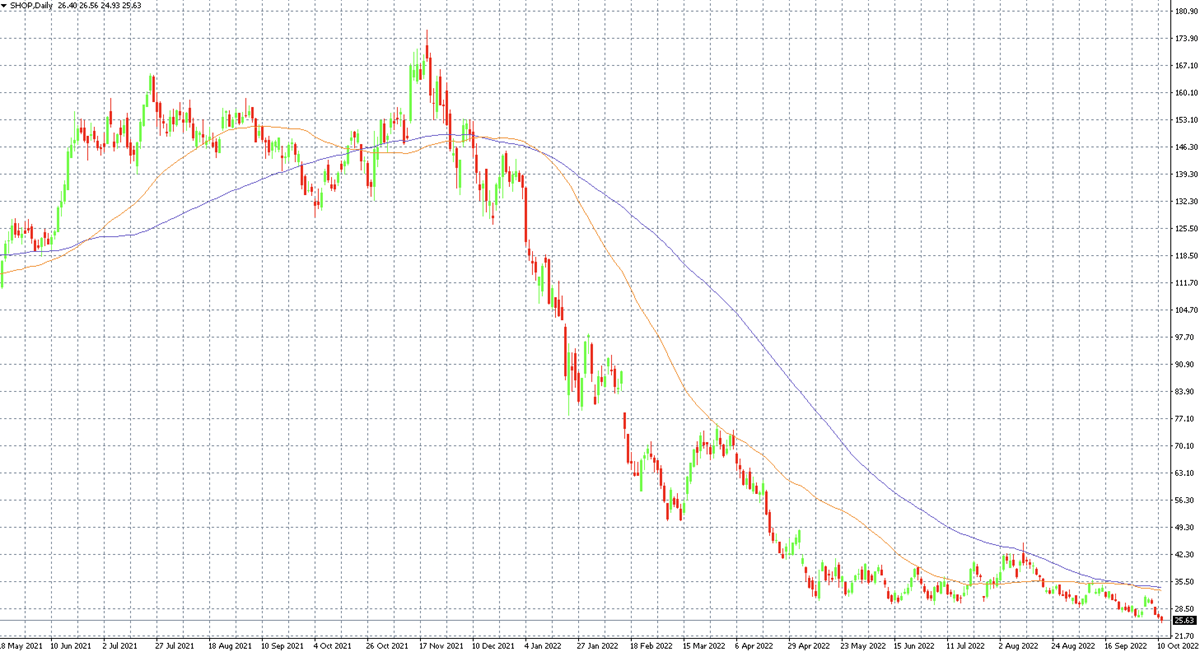Shopify - from hero to zero
The headline aptly describes Shopify's stock performance in recent years. The company, which builds a platform for e-commerce stores, had a golden time during the coronavirus. Its stock peaked at the end of last year when it broke even at $1,700. You're probably familiar with Shopify, but if you haven't looked at its stock in a while, you'll probably be shocked. In fact, the current price is around $25. It should be noted, however, that Shopify stock went through a 10:1 split at the end of June. Even so, Shopify's capitalization is down more than 80% since the beginning of the year. It is thus a clear candidate for the worst-ever large US company on the stock markets. Why did Shopify suffer such a crash?
Shopify is a typical example of a growth company doing business in a fast-paced online environment. Such companies attracted investors in boom times and even during the coronavirus pandemic, as Shopify provided a platform for many people to set up their online stores. The company even managed to become profitable in 2020 and 2021. However, since the beginning of the year, investors have been taking their hands off the growth stock and along with some negative news, Shopify has paid the price. With inflation rising, the company's margins have suffered significantly as smaller eshops tend to offer cheaper goods than established stores. However, this gets more complicated as inflation rises and Shopify's already thin margins take a beating. This can be seen in the company's earnings, which lost nearly $2.7 billion in the first half of the year.

Shares of Shopify on the MT4 platform on the D1 timeframe along with the 50 and 100-day moving averages
In addition, the company's sales are also falling short of expectations. This is obviously negative for the stock, but doubly so for the growth stocks. Investors can still stomach a net loss, it can be linked to a massive investment in marketing, for example, but investors don't like to see a declining pace of sales. In its last earnings, Shopify warned of the further impact of interest rates on its business. Thus, given the outlook for further rate hikes in the US into the first quarter of next year, Shopify cannot now be described as a good opportunity. Risk factors remain and the market still has room to take, with current capitalization still over USD 30 billion.